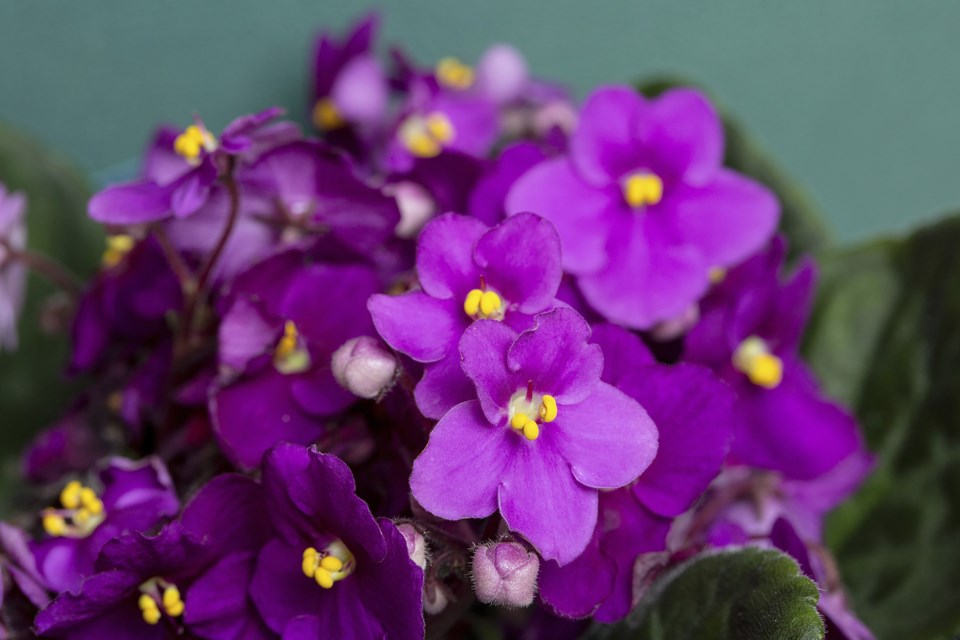African violets, those cheerful, shade-loving houseplants native to Tanzania and introduced to the U.S. in the late 1800s, are finally having their day in the sun: the National Garden Bureau has named 2024 the Year of the African Violet.
Violets in name only, the demure, 4- to 8-inch-tall flowering plants with velvety leaves and colorful flowers are not related to their namesake plants at all. Rather, they belong to the Saintpaulia genus, named for German baron Walter von Saint Paul, who found them growing in the East African rainforest and is credited with introducing them to the U.S. by way of Europe.
They’ve been among the most popular houseplants ever since.
And that popularity was one factor considered by the NGB’s 160 members — leading companies and individuals in the horticulture field — when voting to spotlight the plant in the houseplant category, the nonprofit’s executive director, Diane M. Blazek, told me. She cited the more than 300,000 uses of the hashtag #africanviolet on social media.
Other criteria considered included how easy African violets are to grow, their genetic diversity, and the fact that “they have been in the eye of breeders, which means there are new varieties coming through the pipeline,” she said.
It’s “one of those ‘what’s old is new again’ plants,” Blazek said. “I’m sure we all think of them as Grandma’s plants, but based on numbers from our members, the African violet really has not gone out of favor at all.”
The Downers Grove, Illinois-based NGB was founded in 1920 by James Burdett, a journalist who also wrote copy for seed companies, to provide expert-driven, reliable gardening information to the public.
Burdett also was involved in promoting the first , Blazek said, and the Bureau continues his work by recommending a standout vegetable, annual, flowering shrub, bulb plant, perennial and houseplant for home gardeners to grow each year (2024 is also the year of the squash, Angelonia, Buddleia, lily and hosta respectively).
GROWING TIPS
Although it’s true that African violets are not difficult to grow, that might not be available in all areas of your home, so select a spot carefully.
For the plants to thrive and rebloom, Blazek said, filtered sunlight, the right moisture levels and watering habits are key. “Watering from below is ideal, but don’t let them sit in water too long, and don’t let them dry out too much,” she advised.
Take care not to allow water to come into contact with the leaves or they may become spotted. And use only room-temperature water.
African violets also require high humidity and warmth, but not heat. In dry climates and over winter, when heating units are in use, run a humidifier in the room or place plant pots on a pebble-filled tray to which you’ve added water. As the water evaporates, it will create a humid microclimate around the plant.
Keep them out of direct sunlight. During spring and summer, place the plants beside – not directly in front of – a north- or east-facing window, which provides less exposure than one facing south or west. A sheer curtain between plants and windows would provide extra protection while allowing just the right amount of sunlight to reach plants. Move them into direct light from October through the end of February (except in the Deep South, where the winter sun is harsher).
The plants also prefer slightly acidic soil but do not require frequent fertilization. Feed them every two to three months with a 20-20-20 houseplant fertilizer (or one specially formulated for African violets).
And allow their roots to become somewhat crowded; they like cozy pots.
With proper care, your African violets may bloom year-round.
—-
Jessica Damiano writes a weekly gardening column for the AP and publishes the award-winning . You can for weekly gardening tips and advice.
___
For more AP gardening stories, go to
Jessica Damiano, The Associated Press




